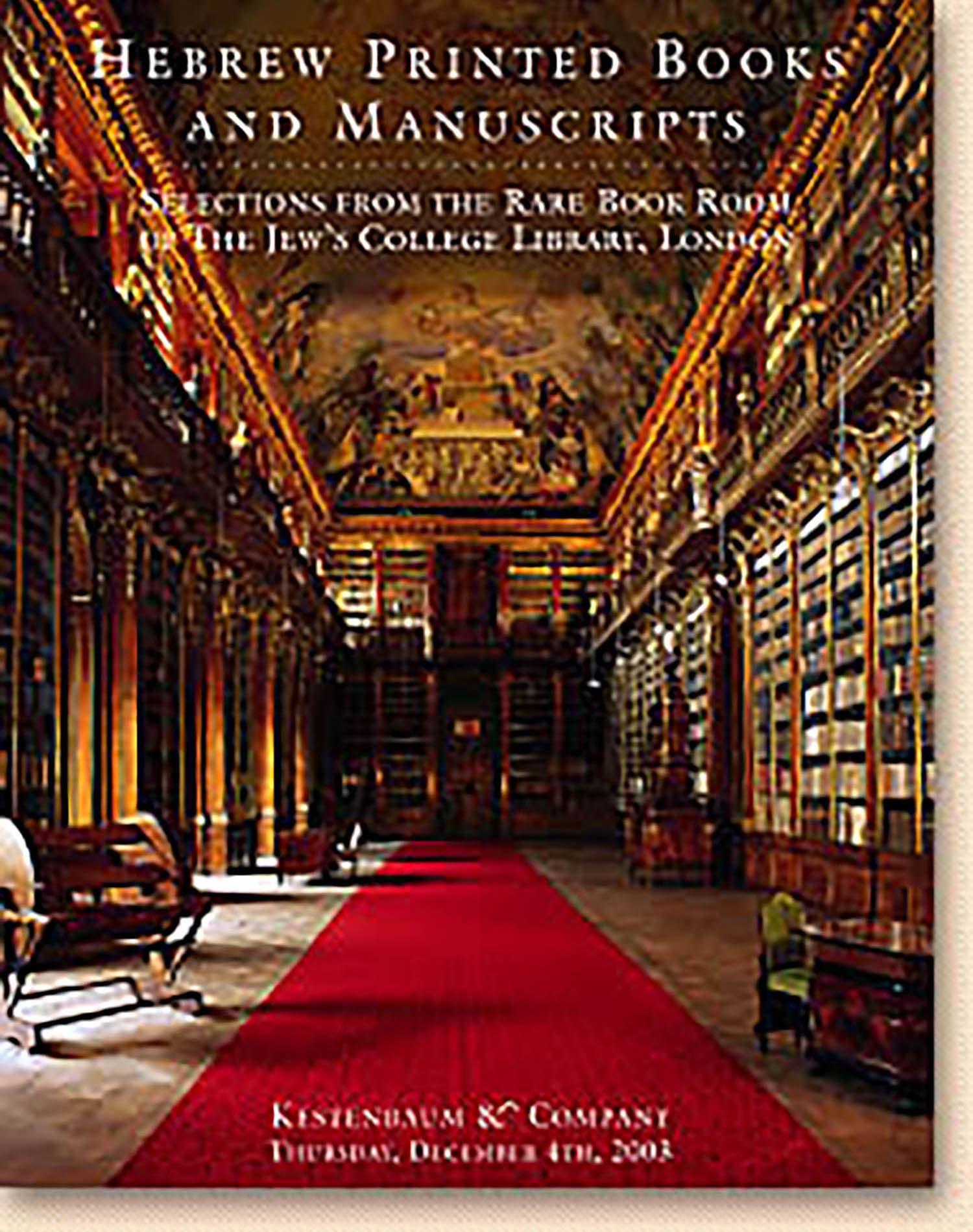(RaMCHa”L). Leshon Limudim (Rules of poetry)

AUCTION 21 |
Thursday, December 04th,
2003 at 1:00
Kestenbaum & Company Holds Inaugural Auction of Hebrew Printed Books & Manuscripts at Their New Galleries
Lot 161
Luzzatto, Moses Chaim
(RaMCHa”L). Leshon Limudim (Rules of poetry)
Mantua: Raphael Hayim D’Italia 1727
Est: $600 - $900
PRICE REALIZED $700
Leshon Limudim was Luzzatto’s first appearance in print, the book composed when the author was but seventeen years old. Carlebach writes that Leshon Limudim “was published when he was seventeen.” Elisheva Carlebach, The Pursuit of Heresy (New York, 1990), p. 195. Actually, Luzzatto was twenty years old at the time of publication in 1727. That same year Luzzatto’s life would undergo dramatic change with the revelation of the “maggid” or familiar spirit Shamuel, subsequent to which Luzzatto would be embroiled in controversy for many years to come. His days as a peaceful poet, typical of his Italian countrymen, were over.
The work is dedicated to Luzzatto’s mentor, Rabbi Isaiah Bassani. There is a poem in honor of the author by David Finzi, who would eventually become Luzzatto’s father-in-law. This is the first of three parts of the work. Parts Two and Three of Leshon Limudim were published from manuscript by Haberman (Jerusalem: Mossad Harav Kook, 1945). EJ, Vol.11, col. 603; Meyer Waxman, History of Jewish Literature III, pp. 104-105.
One of the complaints against Luzzatto by his detractors was that from youth he was enamored of non-Jewish literature. Rabbi Samson Morpurgo wrote to R. Moses Hagiz, “they pleased themselves with the children of strangers” (Isaiah 2:5). Typically, David Finzi defended Luzzatto against this charge. It was also said in jest that he had married the “sister of Lotan” (i.e. Latin) (a pun on Genesis 36:21). Indeed, our own text comes complete with Latin sidebars. See Simon Ginzburg, RaMHaL u-B’nei Doro: Igrot u-Te’udot (Tel-Aviv, 1937), I, pp. 129, 146; II, p. 273; Mordecai Chriqui, Igrot RaMHaL u-B’nei Doro (Jerusalem, 2001), pp. 186, 191; R. David Cohen, Kol ha-Nevu’ah (Jerusalem, 1979), p. 308, n. 452
